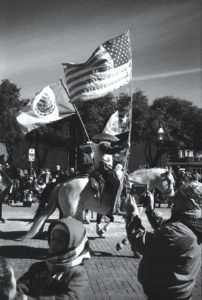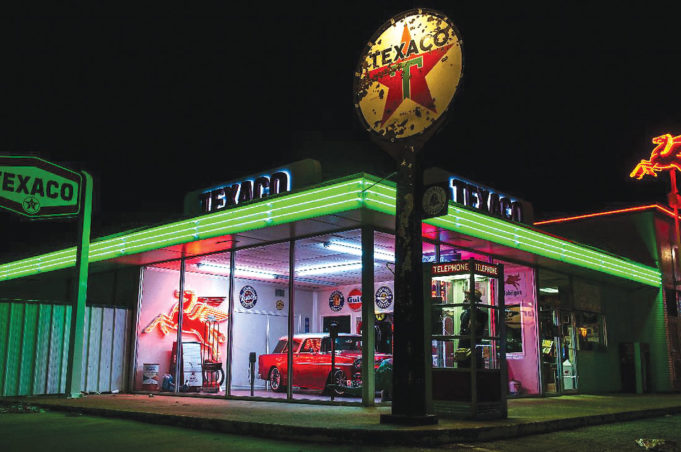The recent proliferation of digital photography coincided with renewed interest on the part of a handful of local photographers in the labor-intensive craft of developing and printing film. Photoshop and other types of software cannot deliver the results that hand-processed film does, according to local photographers Christian Olivares, Roy Rivera, and Donnie Williams.
“You want the best negative possible,” Olivares said. “That way, it will project nicely on paper. You can mess with dodging [to decrease exposure to light] and burning [to increase exposure to light] to create contrast. Most of the changes happen during printing.”
Film processing begins with the use of multiple chemical baths to create a negative image that can be printed. Printing, which uses chemically sensitized paper and a device called an enlarger, is the final step. The photogs said they bonded over a love of photography, particularly film.
“We were the only ones we knew who could talk at length about film, pictures, and digital,” Olivares said. “We would give each other a heads-up on the characteristics of certain types of film. We were geeking out.”

A recurrent theme the friends geeked out on was the need for a space to develop and print film. Williams and Rivera make regular trips to the nearest such location, Photographique, in Dallas. The photography lab is open only during business hours during the week, meaning the trips to print negatives often equal long hours fighting traffic both ways. Last year, the three friends – joined by photographers Chip Tompkins, Diana Urbina, and Christopher Waldon – decided to pool their resources to build Fort Worth’s first communal photography lab. Beyond being a space where the founding members can develop and print film in a convenient location, the lab will host classes for the photographic film unwashed.
“People may take a photography class in high school or college,” Tompkins said. “Once you finish that program, where can you go? We want to allow people who are passionate about photography to continue learning. We want to give back to the community as much as we want a place to work in.”
Williams has a large Instagram following. One question he frequently hears is, “Could you develop my film?”
“It would be nice to say, ‘Come to this class,’ ” Williams said. “Developing film is fairly easy and not that expensive to start. The chemicals last 30 days to two months, and you can get started for less than $200.”
The lab would also be a de facto gathering space for serious local photographers. Olivera, Rivera, and Williams draw a distinction between the throngs of iPhone-wielding attention merchants who populate Instagram and local fine art photographers like Diane Durant, Loli Kantor, and Misty Keasler.
“We’re doing this for people who are photographing purely for the love of it,” Williams said. “Those people need to be found.”
At the soonest, the lab will be up and running by next summer, Olivera said. Collectively, the photogs have most of the physical equipment needed to stock the photo lab. Renovation of any space will be a big financial hurdle. The lab will need to be insulated, refurbished, and fitted with lights and new plumbing. The photographers’ first fundraising effort is a zine, Are We Having Fun Yet? The title is more than a little tongue-in-cheek. Developing film is an exhaustive process that requires several hours of time at a stretch, and the new lab project will take years to fully see through. The photobook, which features 10 images from each of the six photogs, will be released on August 31 at Shipping and Receiving Bar as part of Tony Green and Ronnie Heart’s birthday bash. Funds from the sale of the $25 books will go toward renovating the photography lab.
Olivera, Rivera, and Williams are reluctant to describe themselves as Fort Worth’s photography collective. However the photographers end up as an organization, there are photography shows on the horizon, they said. The lab will be an important educational tool that will help amateur photographers appreciate the labor that goes into making a quality photograph. With that slow groundswell of understanding, fine art photography will begin commanding greater attention and appreciation. At least, that’s the plan.
“It’s important for people to see the work that goes into photographing,” Olivera said. “Often, it’s categorized as, ‘You’re just taking pictures with your phone.’ There are a lot of hours that go into making a quality photograph.”
Tony Green and Ronnie Heart’s Birthday Bash
7pm Sat, Aug 31, at Shipping and Receiving Bar, 201 S Calhoun St, FW. Free. 817-887-9313.












